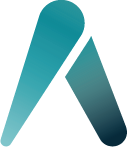Orthoprosthetist interview on new O&P technologies
In this week's blog post, the Adapttech team interviewed Pedro Maia, an ortho-prosthetist who participates and helps in some of the company's projects, to learn more about his opinion in relation to the new technologies that appear in the O&P market.
Pedro works at Padrão Ortopédico, is in Porto, Portugal, and specializes in the manufacture and commercialization of prostheses, orthoses and technical aids.
“I have always been fascinated by the work that Adapttech does, and I am more than happy to assist whenever you need clinical assistance. I love what I do and for me, it’s not just a job. I consider it to be a privilege to be in this line of work. ” - Pedro Maia
He started working in this field in 1987 when he was 19 years old, and still loves what he does; in fact, he feels that this is his calling even though at times it can be very challenging. Pedro stated that “being orthoprosthetist is the best profession in the world when it goes well, and the worst when it goes wrong.”
NEW TECHNOLOGIES IN THE FIELD
When asked for his opinion in relation to the technologies that have been emerging and that intend to transform the O&P market, Pedro stated that he recognizes the importance of these devices but has some doubts and is cautious about some aspects: “Many of the new technologies that are now appearing and have 3D fitting design capabilities simplify a process that is very thorough and varies from case to case. I usually say that the future of orthotics is going to be “ready to wear” and that those who have the monetary capacity will continue to use the traditional method. In my opinion, most companies will use pre-established forms, and make the necessary modifications in order to provide the fitting.”
Speaking about one of the devices they use in Padrão Ortopédico, Pedro revealed to us that one of the problems with his current scanner is that it doesn’t do x-rays, which means he cannot identify where the bones are. If it were possible to make a scanner in which we knew exactly where the bones were, we would be able to work more efficiently.”
ORTHOPROSTHETICS AND NEW TECHNOLOGIES
When questioned about the acceptance of new technologies by prosthetics, Pedro explained that, in Portugal, this profession had the first major boom after the Portuguese Colonial War, because there was a considerable increase of amputees in the country.
He went on to say that “many people who have been linked to some kind of disability within the armed forces have started to work in this area. For example, all the people who founded Padrão Ortopédico came from the old armed forces. In the beginning, when I came here to work, two of the partners were leg amputees, so naturally they had a connection to the field. They were self-taught, which meant the evolution of the technique had been very rudimentary. Due to being unable to speak English, there were very few people who had training outside the country.”
In addition, there has been a gap in this area in terms of training for many years. Many years later two courses were created in Portugal, however professionals in the field felt these courses as an invasion of their space. There are some people that are reluctant to adapt to newly introduced methodologies due to a fear of change.
NEW TECHNOLOGIES VS TRADITIONAL METHODS
When considering the benefits of using new technologies, in comparison with the traditional methods of work Pedro believes that these devices are an added value to the field because they verify the quality of works that have been completed for patients as there are blind areas which cannot be seen by prosthetist. It is in these situations where technologies like INSIGHT become vital.
NEW TECHNOLOGIES AT PADRÃO ORTOPÉDICO
When said if the professionals of Padrão Ortopédico use new technologies as a resource for the manufacture of prostheses, Pedro affirmed “more recently we started to work with 3D, but we are always following the evolution of the market in terms of new technologies.”
Regarding the technology developed by Adapttech, which provides a socket pressure map in real time, Pedro ensures that it is one of the best tools he has seen in this field in the last 20 years:
“INSIGHT allows us to do something that we cannot do otherwise, which is to visualize what people feel. This is one of the biggest shortcomings that we have as professionals. There are some situations in which it is possible to explore, as we have done for years, but there are others in which we have no perception. Even the users themselves cannot define an area of pain because they often experience referred pain, and INSIGHT gives more certainty to patients.” - Pedro Maia


